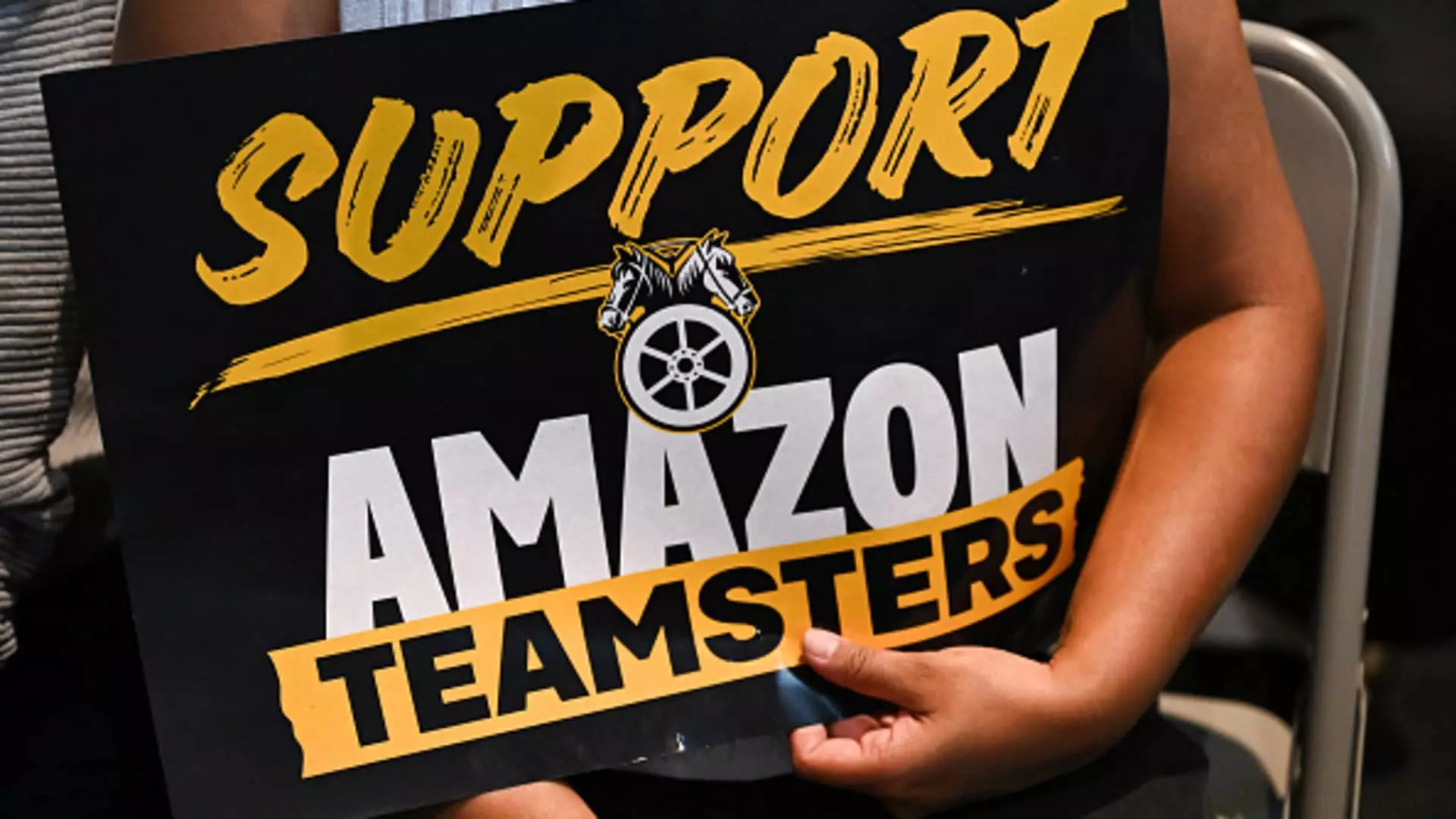In a pivotal development for labor rights, hundreds of Amazon delivery workers in New York have successfully organized under the banner of the International Brotherhood of Teamsters. This move reflects a growing trend among various sectors within Amazon’s logistics framework to unite for improved working conditions. These drivers are affiliated with three separate delivery firms — Cornucopia Logistics, DnA Logistics, and Champion Logistics — operating from the DBK4 facility in Queens. Their collective action underscores the increasing momentum of unionization efforts among Amazon’s contracted workforce.
On a significant Monday morning, the newly organized drivers took direct action by formally requesting Amazon to recognize their unionization efforts and enter into negotiations. This initiative highlights the drivers’ pressing demands: consistent scheduling practices, well-maintained delivery vehicles, and manageable workloads. Such conditions are not merely administrative preferences; they reflect fundamental aspects of job security and employee welfare that have often been overlooked in the gig economy model employed by many delivery companies, including Amazon.
Over the past year, Amazon has faced mounting labor pressure across its vast network of delivery services, which includes walkouts and increasing demands for wage hikes and improved safety measures. In response to these pressures, Amazon announced a $2.1 billion investment aimed at increasing wages for its contracted delivery personnel. This move, while a step in the right direction, can also be interpreted as a reaction to the growing influence of labor organizations and the challenges posed by union formations. The National Labor Relations Board (NLRB), which has recently examined Amazon’s delivery service partner program, plays a crucial role in this dynamic by ruling on the nature of employer-employee relationships in these contracted roles.
Legal Implications of Unionization
Recent determinations by the NLRB suggest that Amazon could be classified as a “joint employer” alongside its subcontractors, which could significantly change the negotiation landscape for workers seeking to unionize. This legal classification would compel Amazon to the bargaining table, requiring them to engage with the union and discuss crucial aspects such as wages, working conditions, and safety protocols. Sean O’Brien, the Teamsters’ general president, emphasized this obligation in a statement, reiterating the reality that Amazon must collaborate with its drivers to enhance their work conditions comprehensively.
The successful unionization of Amazon drivers in New York marks just the beginning of what could be a broader movement within the company. Labor organizations, particularly the Teamsters, have been strategically aiming to expand their influence within Amazon’s workforce. With the company being the second-largest private employer in the U.S., the implications of increased union representation may not only reshape the working environment for delivery drivers but could also set precedents that resonate throughout the logistics and e-commerce industries. As labor rights continue to evolve in the face of corporate power, the unionization of Amazon drivers may signify a transformative moment in the ongoing struggle for workers’ rights and equitable labor practices.

